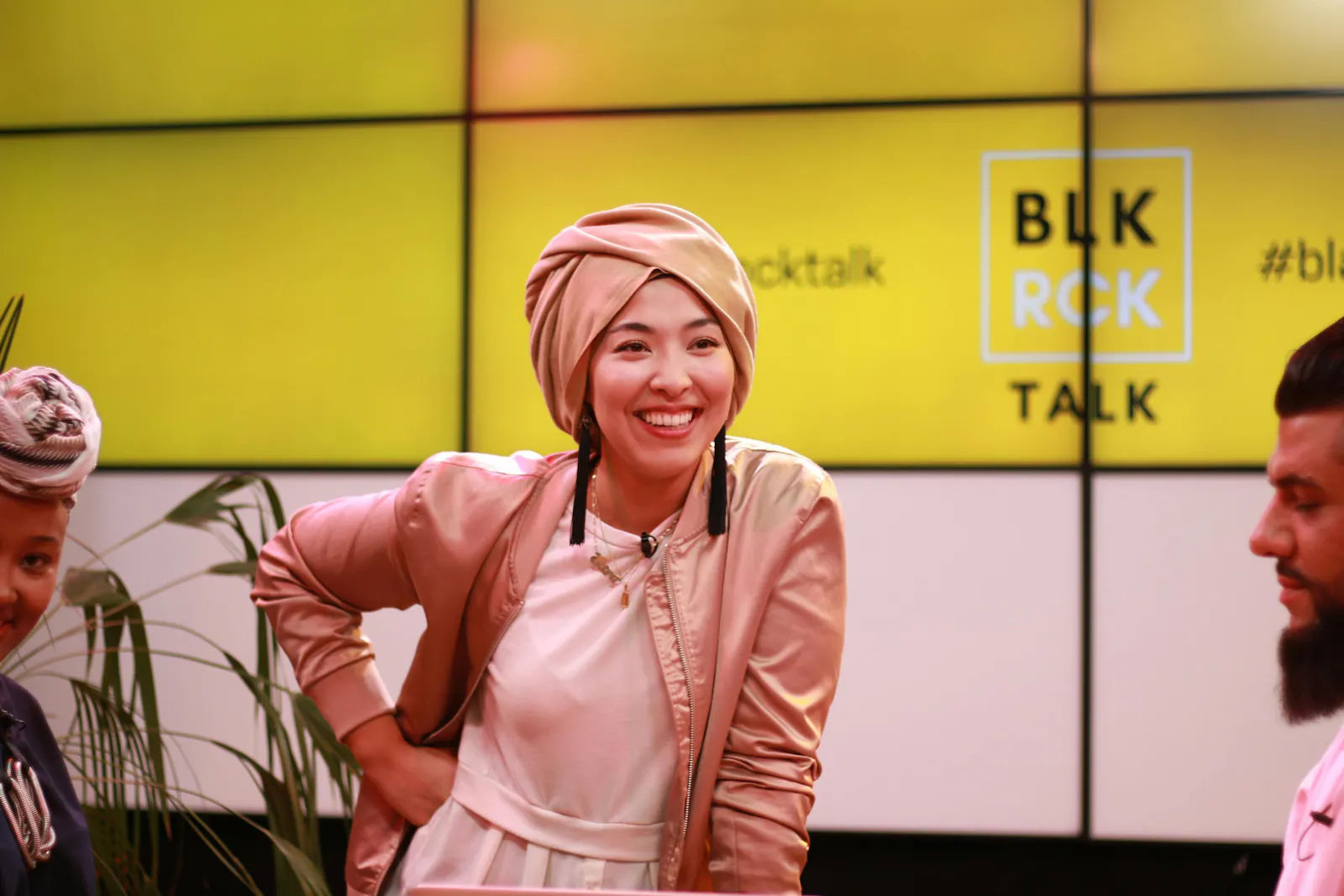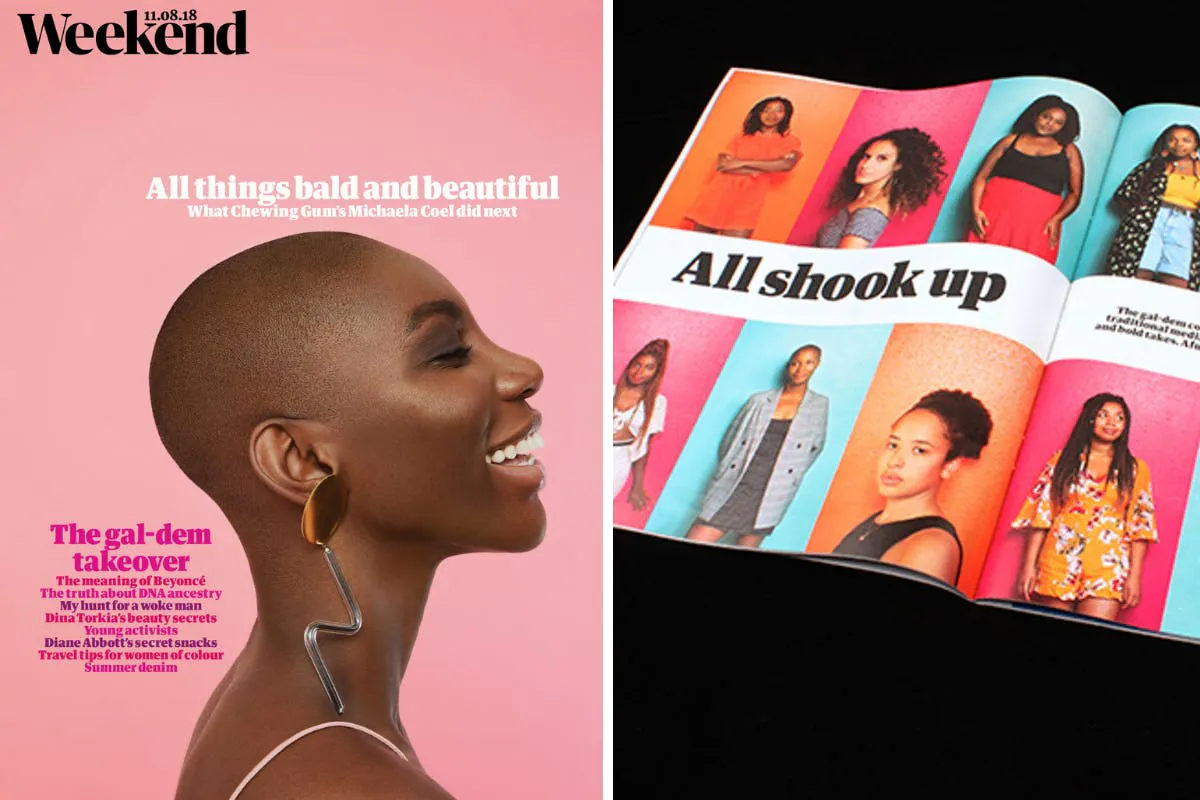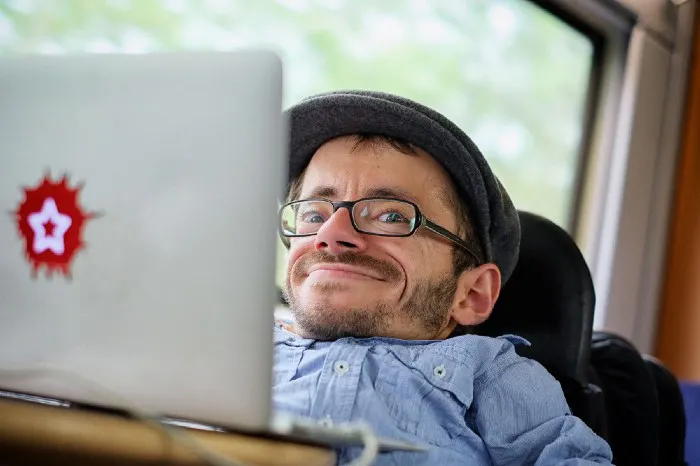How these 5 publishers are fighting representation gaps in mainstream media
Publishers like GAY TIMES and gal-dem are working to address the lack of diversity in their industry. How memberships enable their communities to support this mission
By Vanessa Ellingham

Esra Karakaya hosts the online talk show Karakaya Talks.
Online talk show host Esra Karakaya has had enough of trying to meet the demands of third-party content funders. She says their profit motives regularly rub up against the need for more diverse representation in the media, which is particularly frustrating for a producer like Karakaya, whose show Karakaya Talks (Si apre in una nuova finestra) is made by, for and about millennials of colour in Germany.
That's why Karakaya has turned to viewer funding. It allows her and her team to cover issues that might not make mainstream headlines, but are the issues the show’s community cares deeply about. Recent episodes have covered topics like queer-muslim identity, anti-asian racism in response to the coronavirus outbreak in Wuhan, and blackfishing, where white people attempt to pass for black in an attempt to profit from a perceived social benefit.
Karakaya uses Steady to offer memberships, where almost 400 of the show’s most loyal fans pay a recurring fee, usually monthly, to support the longevity of the project and ensure that the issues on their minds are prioritised.
"Being viewer funded gives us a different kind of freedom and independence that we wouldn't have if we were only funded by an institution." – Esra Karakaya
Karakaya knows the difference intimately – Karakaya Talks was broadcast on YouTube independently at first, before being picked up by German public broadcaster WDR for a spell. When the cooperation ended, the show returned to its first home on YouTube where the small team is now supported by its members.
Memberships have also allowed Karakaya to get closer to her community. “I love how the communication stays within the target group and the content creator,” she says, “and not with some other third party that isn't even involved and oftentimes doesn't even know what it means to be part of the target group.”
Karakaya and her team also consult with paying members about what they would like from the show. “We love how memberships have given us the opportunity to talk to them to understand what they want, what they need, and really create a show that is relevant for them, as millennials of color.” She notes that the German media landscape lacks not only representations of people from this group, but also media that’s tailored to their interests.
“The membership business model allows us to create, facilitate and cultivate a community,” she says. And this brings with it a new level of accountability to her viewers. “If we do not deliver what they think we should be doing, or if we do not deliver on what we have promised, they have the power to hold us accountable by pulling back their support.”
Memberships: the future for independent media
Liv Little, founder of online magazine gal-dem (Si apre in una nuova finestra) in the UK, says that for publications like hers that actively work to fill representation gaps – in their case, by championing women and non-binary people of colour – being funded directly by readers is “powerful!”

One of gal-dem’s most high-profile collaborations, with the Guardian.
The magazine is currently funded by a mix of paid partnerships and, increasingly, membership fees. gal-dem is well on its way to clocking up 3000 members who pay between £4.99 and £14.99 to support the magazine each month.
“Our ambitions are to move towards a situation where reader income covers a more significant portion of our overheads,” she explains. “The membership model is something we’re working on growing. It really is the future for a lot of independent publications.”
Tag Warner, CEO of pioneering LGBTQI+ magazine Gay Times (Si apre in una nuova finestra), agrees. “I personally think this is the way forward for the media,” he says. “When you look at the landscape of digital advertising revenues, once seen as a sort of golden goose of media, and see that they are disintegrating beneath us, when we’re looking at a world where print advertising has nearly completely stopped, then we’re looking at a world where branded content is also being squeezed by various different means through agency structures."
"The real route forward for us is a reader-funded model, and we’re excited to develop that.” – Tag Warner, GAY TIMES
Getting your community paid
Little says that at gal-dem, membership fees are used to fund more original content, produced by members of the community the magazine aims to uplift. “The biggest thing we invest in is the talented people in our communities,” she says. “It’s commissioning work, it’s the video content, it’s the staff costs, it’s the freelancer costs. Every last penny goes into the content that we produce.”
https://steadyhq.com/en/magazine/posts/b9430020-8a78-420c-8ed9-d2a6bce26b0f?utm_source=magazine&utm_medium=link&utm_campaign=representationmedia_post (Si apre in una nuova finestra)Among media makers who strive to fill representation gaps, a lot of this advocacy work is poorly paid, if it’s even paid at all. That’s why Raul Krauthausen (Si apre in una nuova finestra) uses the membership fees he earns via Steady to pay others in his community to work alongside him.
Krauthausen is Germany’s most visible disability rights activist, who has been working for the past 20 years to bring his community’s issues and voices to the mainstream.
Krauthausen is clear with his members about what their monthly payments will cover. “It's not about my salary,” he says, “it's about paying all the people involved in this work.” In doing so, he also draws attention to the need for this work to be more adequately funded.
Some media makers offer exclusive benefits or bonus content in exchange for membership payments. But Krauthausen’s strategy is to make everything he produces, from articles to newsletters and an online talk show, available for free.

Disability rights activist Raul Krauthausen. 📸: Andi Weiland
“Everything I'm doing should be available for free for everyone,” he explains. “If someone believes in the worth of my work, they’re free to support me on a regular basis. That's my personal philosophy, because I work for the underprivileged, who maybe can't afford what I'm doing and shouldn't have to pay for that because they are already under-represented.”
“I'm pretty aware that people who are committing as members are already part of my bubble,” he says, “so they are not the ones I want to convince or inform with my news, thoughts or writing. It's more about reaching a broader audience, like the mainstream.”
Wrestling with the mainstream
That lack of mainstream representation remains a key challenge for media makers like Krauthausen. “The hardest part is reaching a broader audience and getting paid for that,” he says. And when people from underrepresented groups do reach the mainstream, they face many challenges.
“Very often, people with disabilities or people of color are being tokenised by the mainstream media,” says Krauthausen. They find their most sensational stories are readily consumed, “but when we want to talk about other things, and not only about our own suffering or inspirational stories, then we don’t get published”.
As a media professional from an underrepresented group, this can make it very difficult to trust the mainstream part of the industry that, at the same time, you are so desperate to reach.
Last year, podcaster Frank Joung was surprised to find that streaming giant Spotify was launching an in-house production that sounded eerily similar to his own show: an interview podcast telling the stories of Germany’s migrants.
“Of course, the fact that Spotify is even interested in these kinds of concepts shows that migrant stories have the potential to be seen as mainstream,” he says. “But I am curious about whether the bigger platforms are really interested in the content or if they just try to go with a trend. In the end, for Spotify and other platforms, what matters most are numbers: reach and clicks.”
Joung, who hosts the podcast Halbe Katoffl (Si apre in una nuova finestra), says that the independence he’s gained thanks to his paying members allows him to stay true to his concept and avoid the corporate grind. “I love that I am independent and that I don’t have to report to anybody,” he says. “I don’t have the pressure to reach some random number or to please my bosses or an editorial staff.” But there’s always a trade-off. “I might not have the financial stability or any other possibilities mainstream media could also provide.”
https://blog.steadyhq.com/halbe-katoffl-who-is-going-to-pay-money-for-a-free-podcast-5328bb775272?utm_source=magazine&utm_medium=link&utm_campaign=representationmedia_post (Si apre in una nuova finestra)Still, he says without memberships, and the possibility of earning some money from the project, “it would have made the decision to launch a podcast from scratch a lot harder. Who knows? Maybe it would have never happened. Memberships allow me to earn money directly from the listeners – and for the listeners it is a great way to give back and express gratitude. So it’s a win-win.”
Liv Little of gal-dem agrees. “As a business that is set up for the benefit of your community, where you platform your community’s voices, support those voices and work with and learn from them, to then also be funded by that community — you couldn’t ask for more. That’s what it’s all about.”


